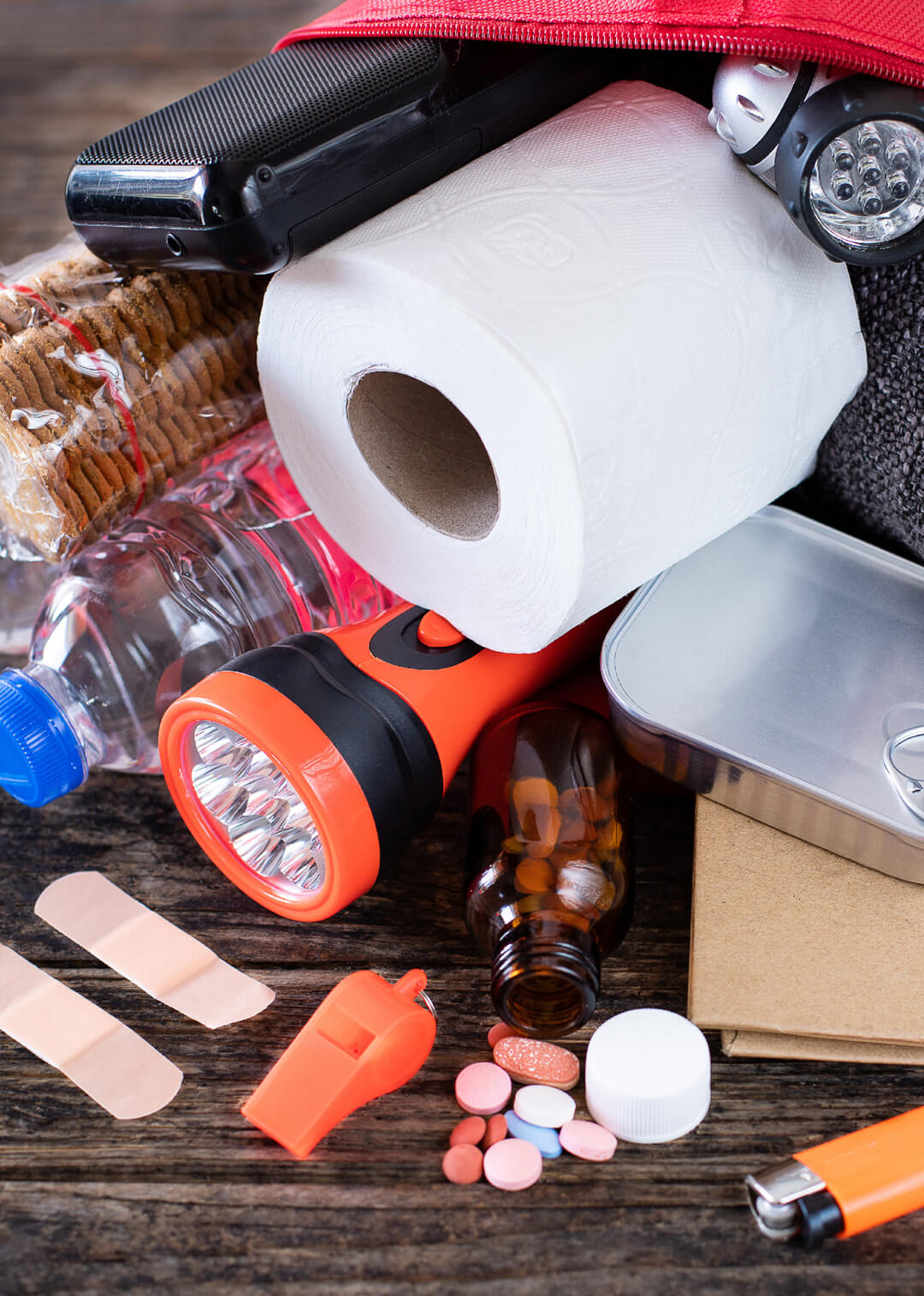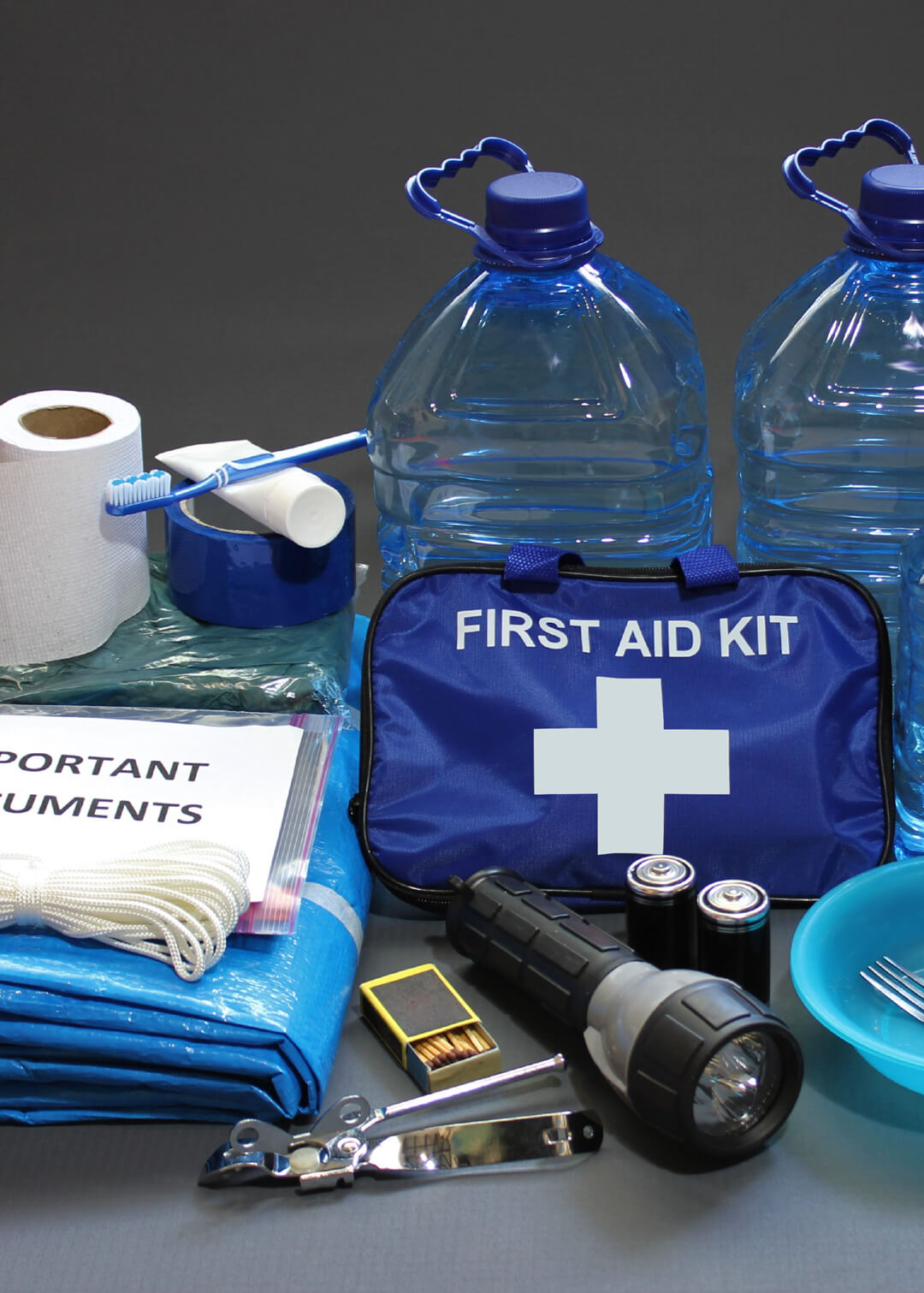72 On You
Prepare Your Family and Home for an Emergency
If an emergency happens, you should be prepared to take care of you and your family for at least 72 hours. You could be waiting several days before emergency assistance can arrive in your area after a disaster. Even if they do arrive sooner, remember they’ll be focused on the higher risk populations such as hospitals, the elderly and schools/children.
So, are you prepared? If not, we want to help you build a kit for your home and know how to take care of yourself in those first few days. We are not here to spark fear, just an awareness in what you may experience. We just want to ensure you are prepared if a natural disaster or some sort of other emergency does arise.
You will want to make sure you have enough food, water and supplies for at least 3 full days for each person in your household.



Items to have in your 72 Hour Emergency Kit, as recommended by FEMA:
- Prescription medications and glasses
- Infant formula and diapers
- Pet food and extra water for your pet
- Important family documents such as copies of insurance policies, identification and bank account records in a waterproof, portable container
- Cash or traveler’s checks and change
- Emergency reference material such as a first aid book or information from www.ready.gov
- Sleeping bag or warm blanket for each person. Consider additional bedding if you live in a cold-weather climate.
- Complete change of clothing including a long sleeved shirt, long pants and sturdy shoes. Consider additional clothing if you live in a cold-weather climate.
- Household chlorine bleach and medicine dropper – When diluted nine parts water to one part bleach, bleach can be used as a disinfectant. Or in an emergency, you can use it to treat water by using 16 drops of regular household liquid bleach per gallon of water. Do not use scented, color safe or bleaches with added cleaners.
- Fire Extinguisher
- Matches in a waterproof container
- Feminine supplies and personal hygiene items
- Mess kits, paper cups, plates and plastic utensils, paper towels
- Paper and pencil
- Books, games, puzzles or other activities for children
- Water, one gallon of water per person per day for at least three days, for drinking and sanitation
- Food, at least a three-day supply of non-perishable food
- Battery-powered or hand crank radio and an NOAA Weather Radio with tone alert and extra batteries for both
- Flashlight and extra batteries
- First aid kit
- Whistle to signal for help
- Dust mask, to help filter contaminated air and plastic sheeting and duct tape to shelter-in-place
- Moist towelettes, garbage bags and plastic ties for personal sanitation
- Wrench or pliers to turn off utilities
- Can opener for food (if kit contains canned food)
- Local maps
If you would like a printable version of the above, you can print this out to take with you to the store.
You can also purchase kits from the Red Cross to easily help you prepare. Check out their store here.
Also don’t forget to check this kit at least once a year. You’ll want to replace any expired items and add additional items as your family needs change.
Remember, not all emergencies happen while you’re at home. So, make sure you have at least some supplies ready with you in your car or at work. Here are a few suggestions for what to keep in your car.
Have questions about how to build your kit or about emergency procedures?